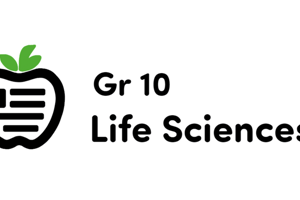Podcast
Questions and Answers
Where are CO2 and O2 found in the atmosphere?
Where are CO2 and O2 found in the atmosphere?
- CO2 and O2 are not found in the atmosphere
- CO2 and O2 are found in the atmosphere (correct)
- CO2 and O2 are found in the clouds
- CO2 and O2 are found dissolved in water in the atmosphere
What is the Law of conservation of matter?
What is the Law of conservation of matter?
- Matter is only destroyed
- Matter can be created and destroyed
- Matter is neither created nor destroyed (correct)
- Matter is only created
Where are nutrients (elements) drawn up by plants from?
Where are nutrients (elements) drawn up by plants from?
- Nutrients are drawn up by plants from the soil (correct)
- Nutrients are drawn up by plants from clouds
- Nutrients are drawn up by plants from the atmosphere
- Nutrients are drawn up by plants from water
What is the source of transmission for diseases mentioned in the text?
What is the source of transmission for diseases mentioned in the text?
What process causes water vapor to cool and fall to earth as rain?
What process causes water vapor to cool and fall to earth as rain?
Explain the biogeochemical/nutrient cycle and how nutrients flow between reservoirs.
Explain the biogeochemical/nutrient cycle and how nutrients flow between reservoirs.
Describe the role of plants in the water cycle and how water is returned to the atmosphere.
Describe the role of plants in the water cycle and how water is returned to the atmosphere.
What are the percentages of nitrogen gas (N2), oxygen gas (O2), and other gases in the atmosphere?
What are the percentages of nitrogen gas (N2), oxygen gas (O2), and other gases in the atmosphere?
Explain how inorganic gases cycle through living things and mention the processes involved.
Explain how inorganic gases cycle through living things and mention the processes involved.
Describe the process of condensation and precipitation in the water cycle.
Describe the process of condensation and precipitation in the water cycle.
Flashcards
CO2 and O2 Location
CO2 and O2 Location
Carbon dioxide (CO2) and oxygen (O2) are gases found in the atmosphere.
Law of Conservation
Law of Conservation
Matter cannot be created or destroyed.
Plant Nutrient Source
Plant Nutrient Source
Plants get nutrients from the soil.
Disease Transmission Source
Disease Transmission Source
Signup and view all the flashcards
Condensation and Rain
Condensation and Rain
Signup and view all the flashcards
Biogeochemical Cycle
Biogeochemical Cycle
Signup and view all the flashcards
Plant Role in Water Cycle
Plant Role in Water Cycle
Signup and view all the flashcards
Atmospheric Gas Percentages
Atmospheric Gas Percentages
Signup and view all the flashcards
Inorganic Gas Cycle
Inorganic Gas Cycle
Signup and view all the flashcards
Precipitation Definition
Precipitation Definition
Signup and view all the flashcards
Process for Inorganic Gas Cycle
Process for Inorganic Gas Cycle
Signup and view all the flashcards
Reservoirs
Reservoirs
Signup and view all the flashcards
Nutrient Flow
Nutrient Flow
Signup and view all the flashcards
Photosynthesis
Photosynthesis
Signup and view all the flashcards
Cellular Respiration
Cellular Respiration
Signup and view all the flashcards
Transpiration
Transpiration
Signup and view all the flashcards
Study Notes
Composition of the Atmosphere
- CO2 and O2 are found in the atmosphere, with O2 making up approximately 21% and CO2 making up a small percentage.
- The atmosphere is composed of 78% nitrogen gas (N2), 21% oxygen gas (O2), and small percentages of other gases.
Law of Conservation of Matter
- The Law of Conservation of Matter states that matter cannot be created or destroyed, only converted from one form to another.
Nutrient Uptake by Plants
- Plants draw up nutrients (elements) from the soil.
Disease Transmission
- The source of transmission for diseases is not specified in the text.
Water Cycle
- Evaporation and condensation cause water vapor to cool and fall to earth as rain.
Biogeochemical/Nutrient Cycle
- The biogeochemical/nutrient cycle involves the flow of nutrients between reservoirs, including the soil, atmosphere, and living organisms.
- Nutrients are drawn up by plants from the soil, used by living organisms, and eventually returned to the soil through decomposition.
Plant Role in Water Cycle
- Plants play a crucial role in the water cycle by releasing water vapor into the atmosphere through transpiration.
- Water is returned to the atmosphere through transpiration, allowing the water cycle to continue.
Gas Cycles
- Inorganic gases, such as CO2 and O2, cycle through living things through processes including photosynthesis and respiration.
- CO2 is taken up by plants during photosynthesis and released back into the atmosphere through respiration.
Condensation and Precipitation
- Condensation occurs when water vapor in the air cools and changes state from a gas to a liquid.
- Precipitation occurs when condensed water droplets in the air become too heavy to remain suspended, falling to the earth as rain.
Studying That Suits You
Use AI to generate personalized quizzes and flashcards to suit your learning preferences.




